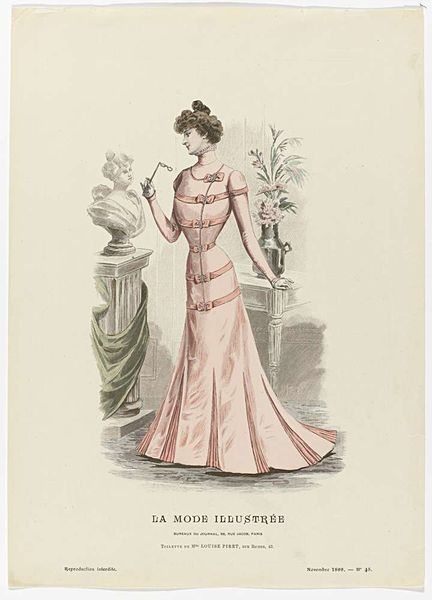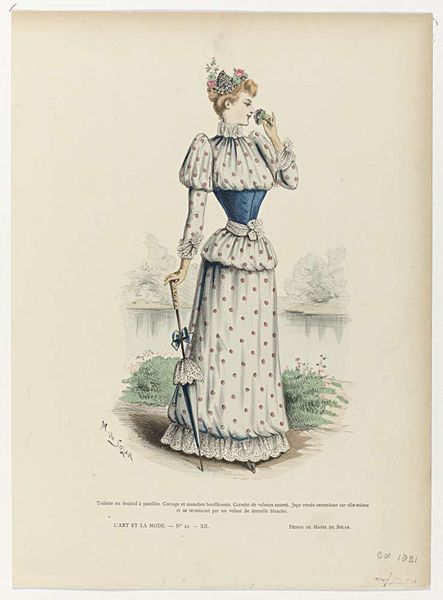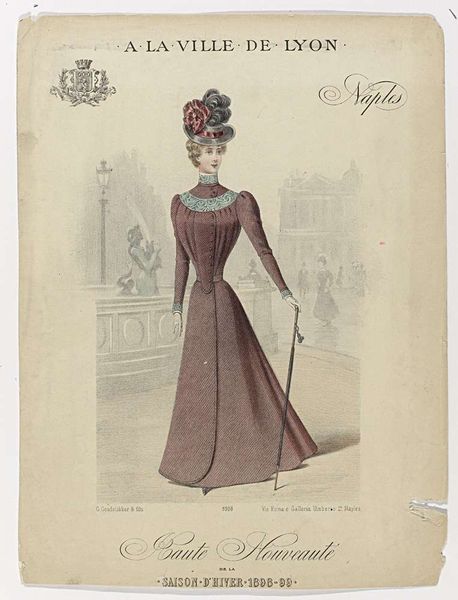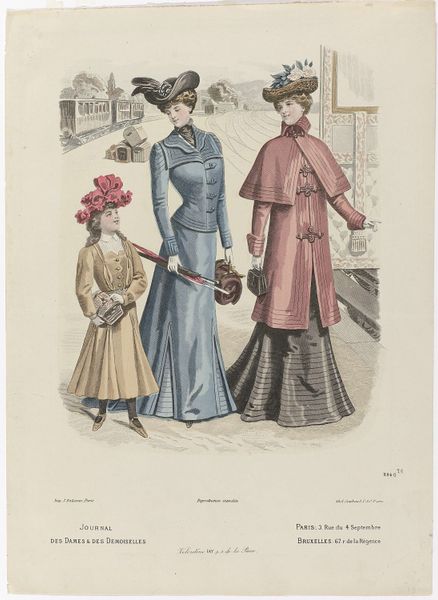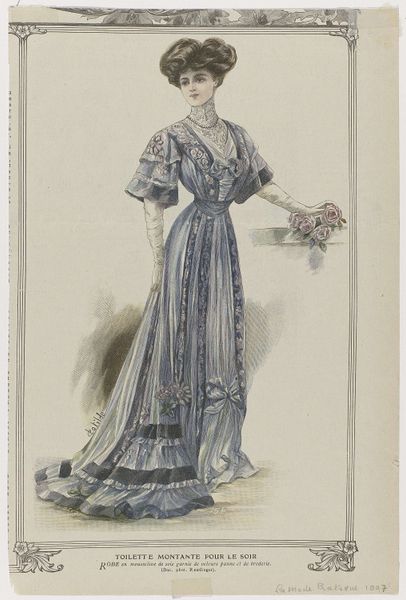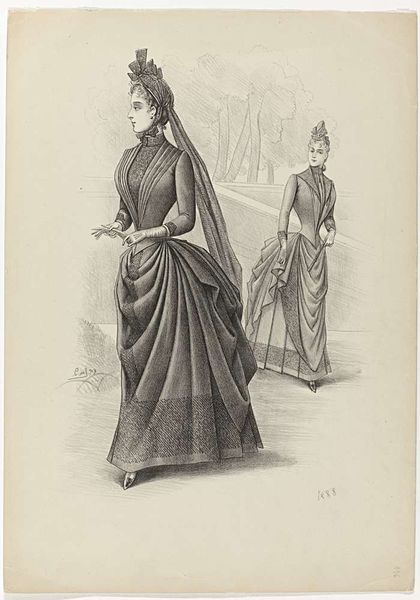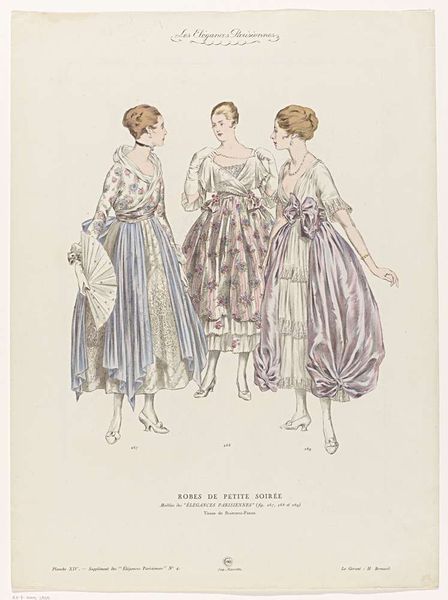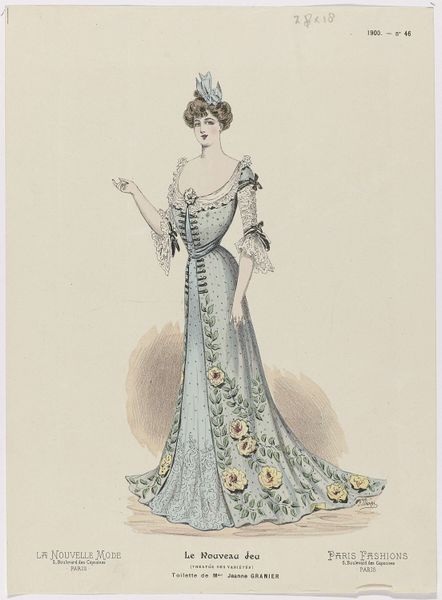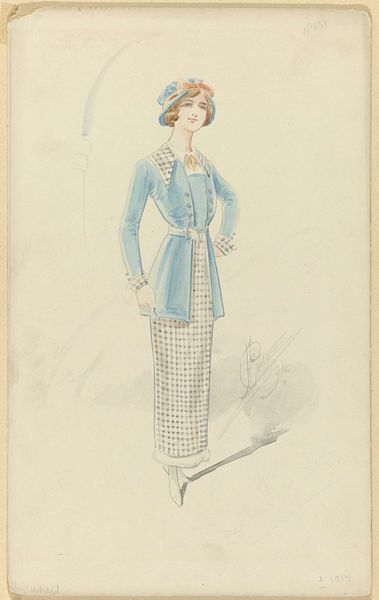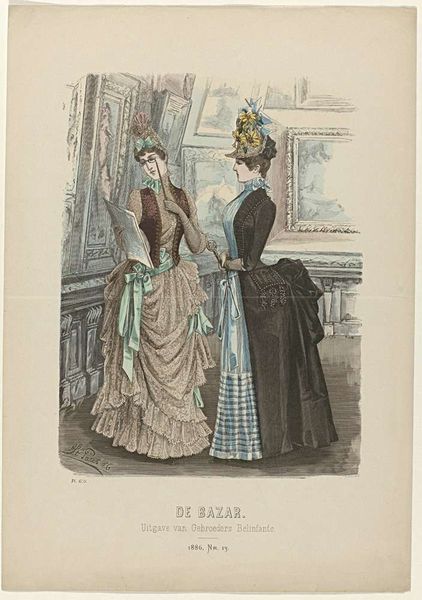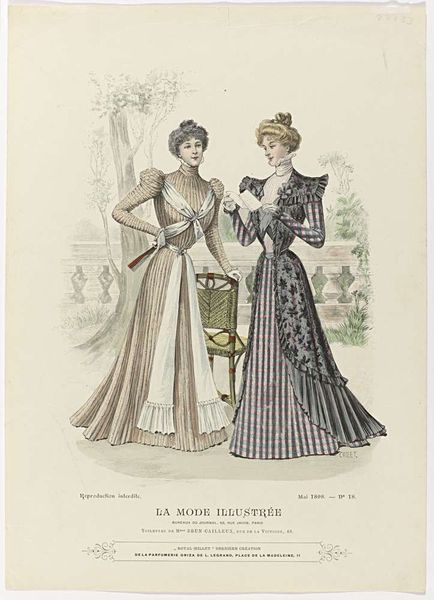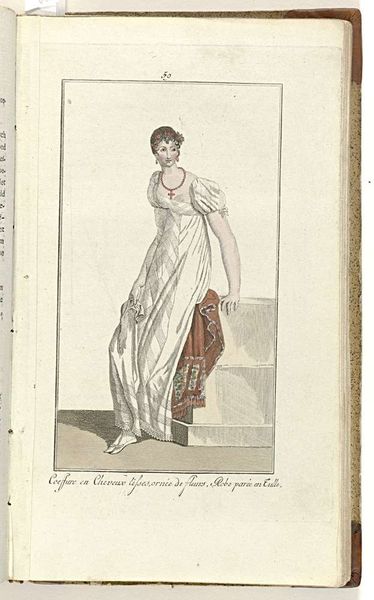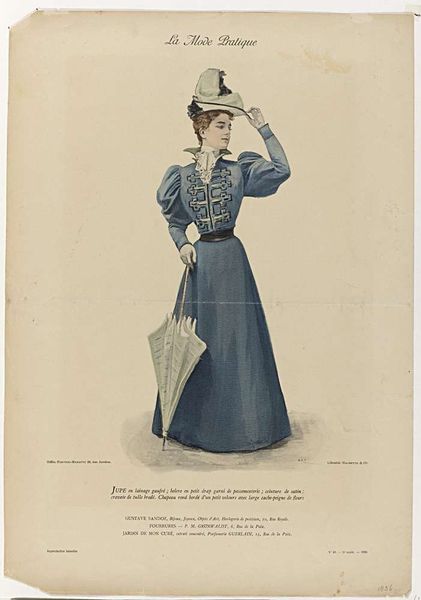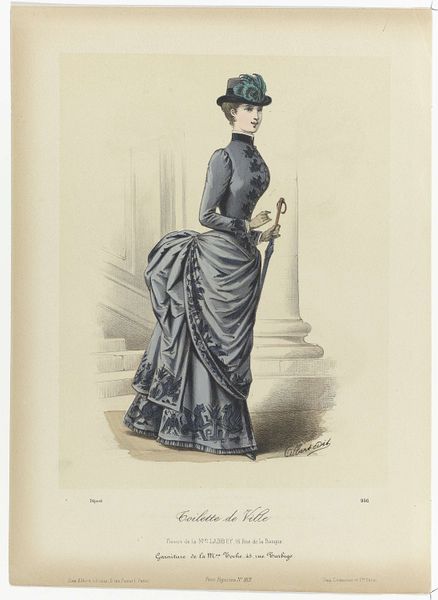
drawing, print, paper, ink
#
portrait
#
drawing
#
art-nouveau
# print
#
paper
#
ink
#
intimism
#
watercolour illustration
#
genre-painting
#
academic-art
#
decorative-art
#
realism
Dimensions: height 376 mm, width 268 mm
Copyright: Rijks Museum: Open Domain
This fashion plate, created by an anonymous artist, presents a suit with incredible detail. The design is dominated by a grid, meticulously rendered to convey texture and form. The plaid pattern, a series of intersecting lines, creates a sense of depth and movement across the fabric. The suit itself, with its fitted jacket and long skirt, embodies the era's aesthetic values and is indicative of social codes and the expectations of its time. The structural integrity of the suit is reinforced through the linear pattern of the plaid, suggesting order and control. Yet, the soft color palette and the slight asymmetry in the draping of the shawl introduce a subtle tension, destabilizing the rigid formalism. Ultimately, this fashion plate is a testament to the power of line and pattern to communicate ideas about identity and social roles, revealing the complex interplay between individual expression and societal norms. This makes it a fascinating study in the semiotics of dress.
Comments
rijksmuseum about 2 years ago
⋮
In the 1890s, trends in ladies’ fashion focused particularly on the cut of sleeves. Still puffed up like balloons in the 1895-1896 season, by 1898 sleeves were closefitting once more. Entirely new was the toilette tailleur – a skirt with a matching jacket, such as in the chequered ensemble here – which was perfectly suited for travel. The ladies’ suit was thus born.
Join the conversation
Join millions of artists and users on Artera today and experience the ultimate creative platform.
